Our list includes:
- Most Fuel Efficient 2015 Subcompacts
- Most Fuel Efficient 2015 Mid-size cars
- Fuel Efficient 2015 Crossovers and SUVs
Hybrids aren’t for everyone. But saving money at the pump is. Here’s our shortlist of the most fuel efficient cars (and utility vehicles) for 2015, including subcompacts, mid-size cars, and sport-utilities.
Oil prices might be taking a temporary breather, but you can’t expect carmakers to take their foot off the fuel-economy throttle any time soon. Coming government regulations and an inevitable return to inflationary fuel pricing mean interest will remain high in keeping fuel use low.
No surprise, but if you look through the list of the most fuel-efficient vehicles in Canada, compiled by Natural Resources Canada, hybrids and electrics dominate the winner’s circle. (See sidebar.)
But fuel savings alone don’t a cheap ride make. If you save $4,000 in fuel but spend $6,000 for the bump to a hybrid, you’re out $2,000. From an altruistic, save-the-environment standpoint, David Suzuki will salute you. Your accountant will think you’re crazy.
So for my list, I dug through Natural Resources Canada’s Fuel Consumption Guide to come up with fuel-sippy cars that are also sensible in the big picture. By and large, the winners in this competition will have lower fuel costs unencumbered by a vastly higher purchase price.
For all numbers, I’m relying on NRCan’s projections. Your mileage will almost certainly vary, but by and large, the cars that are most fuel-efficient on NRCan’s list will be the most fuel-efficient on your driveway, regardless of your actual numbers, since the differences between cars should be more or less the same either way. All fuel economy figures are based on the newer (read: more realistic) five-cycle test protocol.
Most Fuel Efficient Subcompacts
2015 Mitsubishi Mirage
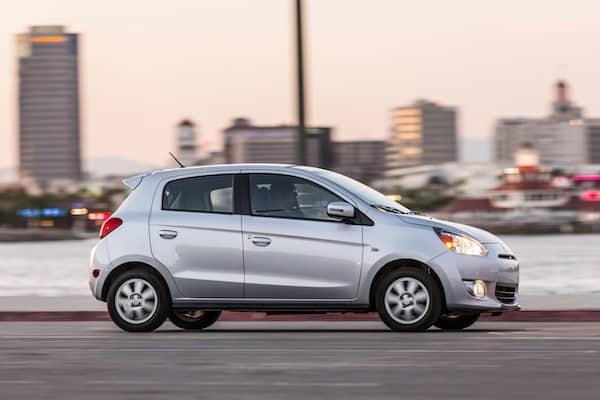
If you want ridiculously low annual fuel costs at the lowest possible price, it’s hard to beat the tiny Mitsubishi Mirage. With its paucity of creature comforts and puny three-cylinder engine, its $1,274 estimated annual fuel cost is among the lowest on the market. That the car can be had for about $14,000 means you aren’t overcoming a big price jump to start seeing savings.
It isn’t among the most fun-to-drive cars on the road, however. To get that $1,274 estimate, you have to opt for the CVT, which adds $1,200 to the price of the five-speed stick. Since the stick is only $104 more in annual fuel costs, it would be cheaper to get the stick. Unless you wanted to still be driving this car in the year 2025.
2015 Mitsubishi Mirage: $12,498.
2015 Ford Fiesta SFE
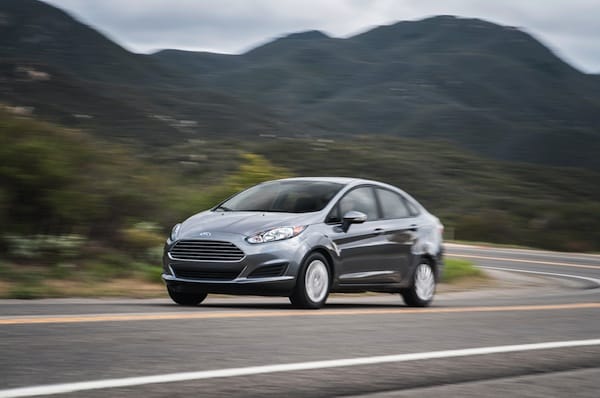
One of the most interesting small cars on the road today, from a fuel-economy perspective, is the Ford Fiesta. The cheapest annual fuel cost for Fiesta is $1,378, on the 1.0-litre SFE model, which combines a three-cylinder turbo with a five-speed manual transmission.
The 1.0-litre EcoBoost is a $1,500 option on the SE model, for a combined sticker of $17,499. To be sure, the fuel savings vs. price comparison don’t exactly stand up if you’re comparing the base ($14,999) S model to the SE with the EcoBoost package. The least expensive S model has an annual fuel cost about $200 more than the EcoBoost, which means that between the SE and the SE with EcoBoost, payback is 7.5 years out. It’s 12.5 years away comparing to the S model.
But you’re not just buying fuel savings with the EcoBoost. The small turbo has more horsepower and more torque than the base engine, so you have to figure in driving enjoyment, as well.
Overall, your cost on the Fiesta will be higher than the Mirage, but your fun factor will be quite a bit higher, too. The Fiesta is zippy in handling, relatively quick when needed and quite comfortable inside, too. Unlike more efficient cars such as the Smart Fortwo or Scion iQ, the Fiesta will actually seat more than two people.
2015 Ford Fiesta SE SFE: $17,499
2015 Ford Fiesta SE: $15,999
Most Fuel-Efficient 2015 Mid-size cars
2015 Honda Accord Hybrid
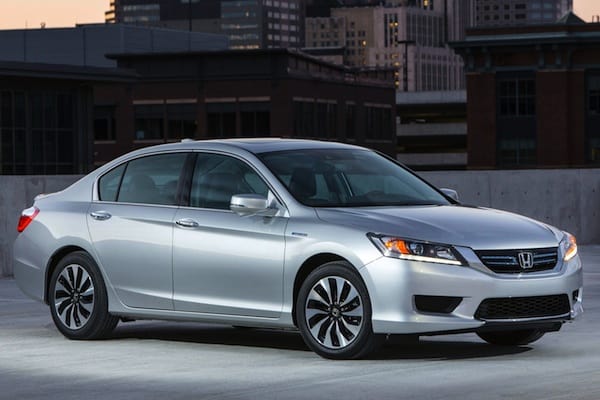
Remember how I said this list wouldn’t be full of hybrid options? I lied.
Because there is one hybrid that makes a very compelling case for itself even set against the lowest-priced gasoline-powered model in the lineup.
That’s the Honda Accord Hybrid.
The Accord Hybrid is the only mid-size car I could find with the annual fuel cost estimate below $1,000. It’s 4.7 l/100km city and 4.9 highway translates into $988 per year. That’s $754 less than its most fuel-efficient non-hybrid sibling, the Accord with the 2.4-litre four-cylinder. The price spread is $5,850. Dividing that by the $754 saved each year puts payback at 7.7 years out.
Considering we have a 16-year-old Honda that’s still going strong, less than eight years for payback isn’t completely out of whack with the purchase price. Especially considering you get V-6 like performance for far less fuel than the four-banger. You just have to live with a slightly smaller trunk.
2015 Honda Accord Hybrid: $29,900
2015 Honda Accord: $24,050
2015 Mazda6
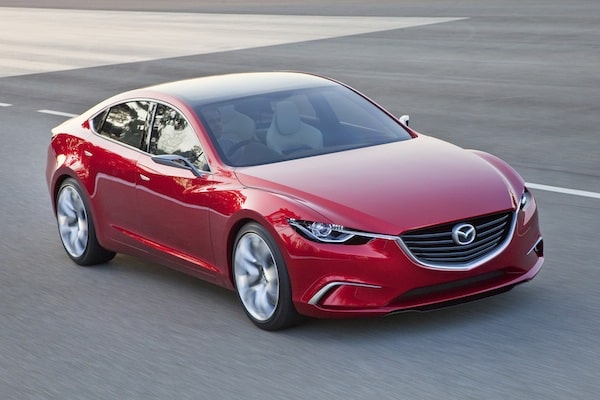
As gas-powered mid-size cars go, the Mazda6 might just be the fuel-economy king. Its 2.5-litre four combined with an automatic transmission carries a rating of 8.8 l/100km city and 6.2 highway for an annual fuel cost of $1,690. Upgrade (at least in my opinion) to the six-speed manual and the fuel cost climbs to $1,794, still fairly competitive.
And this is all without an expensive hybrid engine, Mazda’s i-Eloop regenerative braking or anything that remotely detracts from driving enjoyment, something the Mazda6 has in copious amounts. It is one fun car to drive.
(By comparison, the i-Eloop model shaves $104 off the annual fuel use of the regular Mazda6, but it’s only available in a $2,800 technology package on the topline GT, more than $10,000 above the price of the base Mazda6.)
2015 Mazda6: $24,495
Fuel Efficient 2015 Crossovers and SUVs
This is a massive segment, so I’m going to stick to the smaller end of this scale. At the end, I’ll point out some of the better larger models.
2015 Nissan Rogue

At 9.2 litres per 100km city and 7.2 city, the Rogue appears to be the fuel-economy leader in the small crossover segment, with an annual fuel cost of $1,846 for the two-wheel-drive model and only a small bump to $1,898 for the all-wheel-drive version.
It runs Nissan’s 2.5-litre four through a continuously variable transmission to achieve those numbers, which don’t require upgrades to achieve.
The Rogue’s $23,798 base price makes those fuel economy numbers available at quite a competitive price, as well.
2015 Nissan Rogue: $23,798
2015 Toyota RAV-4
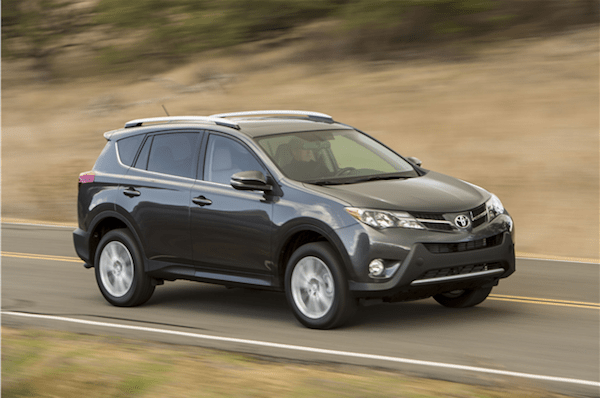
I mention this vehicle because its fuel economy is decent, though not quite on par with Rogue, but the RAV-4 achieves its numbers using proven conventional technology. CVTs are getting better, but we’ve known how to build durable automatics for a long, long time. That’s worth something. That, and CVTs aren’t exactly fun to drive.
The RAV-4’s numbers of 10 l/100km city and 7.6 highway work out to $2,002 per year for a two-wheel driver and $2,106 for all-wheel drive.
2015 Toyota RAV-4: $24,005
2015 Subaru Forester
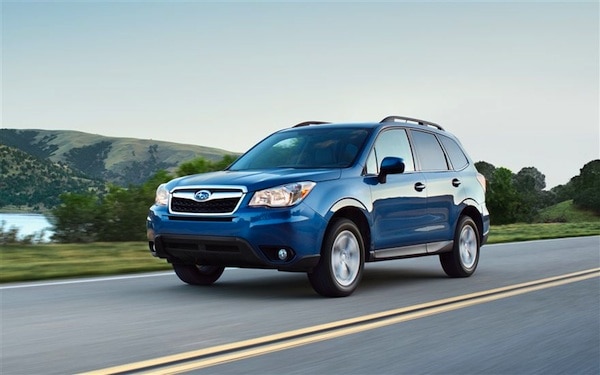
All Subarus, save for the BRZ, are all-wheel drive, so there’s no considerations for a two-wheel driver if you wanted one. Even so, the Forester delivers outstanding fuel economy for its size, with the 2.5i — the base model — coming in at 9.6 l/100km city and 7.4 highway for an annual fuel cost estimate of $1,924. That’s with a CVT and is $260 less than the six-speed stick. (Is the joy of driving a slick stick worth $260 more in fuel? I think so, but your mileage may vary.)
2015 Subaru Forester: $25,995
2015 Mazda CX-5
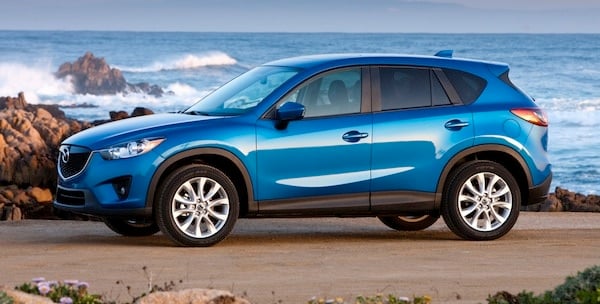
This was the first Mazda to incorporate all aspects of Mazda’s Skyactiv technology, which uses unique engines, transmissions, chassis designs, suspension configurations and body design to save weight and save fuel.
The 2.0-litre engine delivers excellent fuel economy of 9.0 l/100km city and 6.8 highway for annual fuel cost of $1,768. And that’s with a fun-to-stir stick, too. The automatic adds a slight penalty at 8.9 city and 7.3 highway for an annual bill of $1,794.
But the 2.0 is in over its head here and makes the CX-5 particularly pokey. So Mazda quickly brought out the 2.5-litre Skyactiv engine that’s quite zippy but quite unavailable with a stick. With the automatic and two-wheel drive, it’s rated at 9.6 city and 7.4 highway for $1,898, still not bad. All-wheel drive adds a slight penalty to both engines.
2015 Mazda CX-5 (2.0-l engine): $22,995
2015 Mazda CX-5 (2.5-l engine): $28,895
For larger SUVs, some of the leaders include the Nissan Pathfinder ($2,698 annual fuel use); Toyota Highlander four-cylinder ($2,314 annual fuel use); Ford Explorer EcoBoost ($2,314) and Chevy Tahoe ($3,146).


